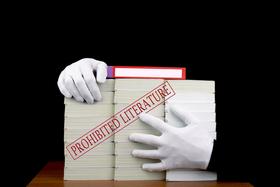Woestina Elementary School serves 112 students in grades Kindergarten-5.
The percentage of students achieving proficiency in math was 50-59% (which was lower than the New York state average of 67%). The percentage of students achieving proficiency in reading/language arts was 50-59% (which was approximately equal to the New York state average of 58%).
The student:teacher ratio of 11:1 was equal to the New York state level of 11:1.
Minority enrollment was 3% of the student body (majority Asian), which was lower than the New York state average of 59% (majority Hispanic).
School Overview
Grades Offered
Grades Kindergarten-5
Total Students
112 students

Total Classroom Teachers
10 teachers

Students by Grade

School Rankings
Math Test Scores (% Proficient)
(10-11)50-59%
67%

Reading/Language Arts Test Scores (% Proficient)
(10-11)50-59%
58%

Student : Teacher Ratio
11:1
11:1

American Indian
n/a
1%
Asian
1%
10%

Hispanic
n/a
29%

Black
n/a
16%

White
97%
41%

Hawaiian
n/a
n/a
Two or more races
2%
3%
All Ethnic Groups



Eligible for Free Lunch
18%
51%

Eligible for Reduced Lunch
10%
3%

School Statewide Testing
School District Name
Source: 2011-2012 (latest school year available) National Center for Education Statistics (NCES), NY Dept. of Education
Frequently Asked Questions
What percent of students have achieved state testing proficiency in math and reading?
50-59% of students have achieved math proficiency (compared to the 67% NY state average), while 50-59% of students have achieved reading proficiency (compared to the 58% NY state average).
How many students attend Woestina Elementary School?
112 students attend Woestina Elementary School.
What is the racial composition of the student body?
97% of Woestina Elementary School students are White, 2% of students are Two or more races, and 1% of students are Asian.
What is the student:teacher ratio of Woestina Elementary School?
Woestina Elementary School has a student ration of 11:1, which is equal to the New York state average of 11:1.
What grades does Woestina Elementary School offer ?
Woestina Elementary School offers enrollment in grades Kindergarten-5
What school district is Woestina Elementary School part of?
Woestina Elementary School is part of Schalmont Central School District.
Recent Articles

Unlocking Academic Excellence: A Guide to Advanced Placement (AP) Courses
Discover how AP courses empower students to pursue college-level studies, earn college credits, and stand out in the competitive admissions landscape.

Understanding ADHD in Children: Signs, Diagnosis, and Support Strategies
This comprehensive article explores the complex nature of attention-deficit/hyperactivity disorder (ADHD) in children, providing insights into its symptoms, diagnosis process, and effective support strategies. From recognizing early signs to navigating the diagnostic journey, parents will gain valuable knowledge to help their child thrive. Expert insights, real-life examples, and practical tips empower readers to create a supportive environment that meets the unique needs of children with ADHD.

March 04, 2024
Teaching in Contemporary TimesWe explore why individuals choose teaching, illuminating intrinsic motivations, the influence of role models, the pursuit of lifelong learning, and the aspiration to impact society.





